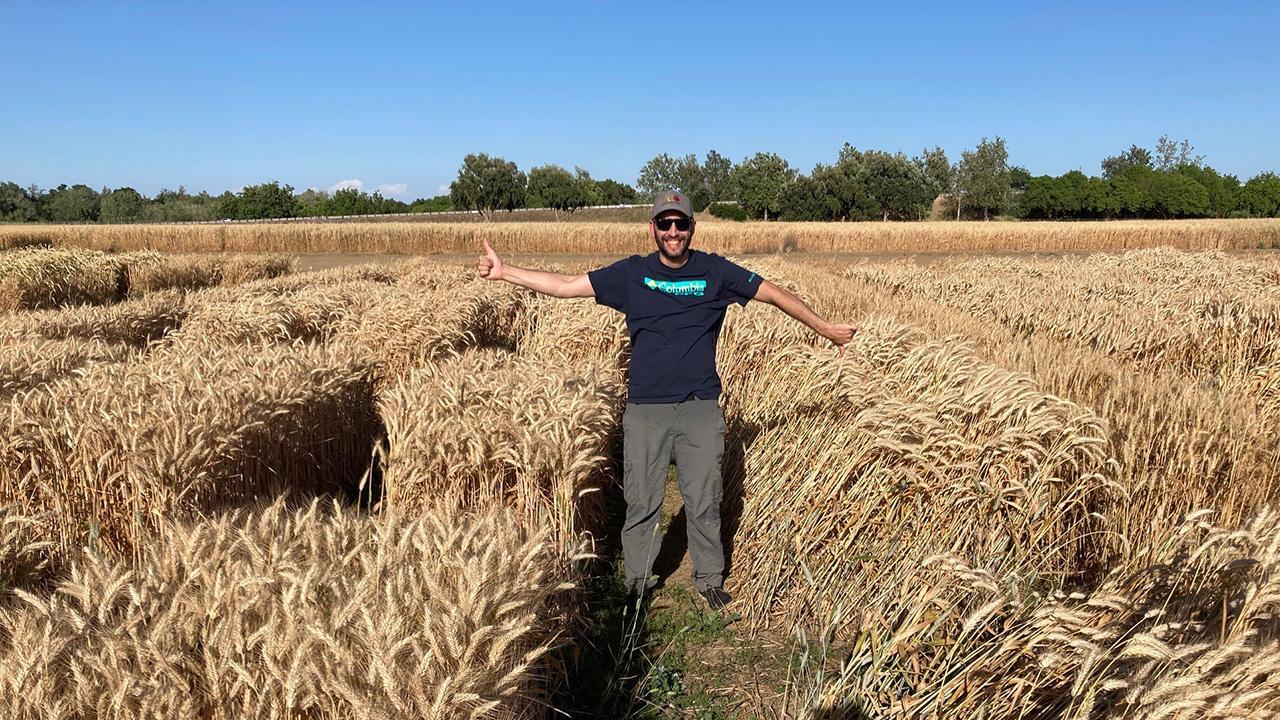
UC Davis Develops New Genetic Tool for Shorter Wheat
March 26, 2025| |
Scientists at the Department of Plant Sciences at the University of California Davis have developed a new genetic tool to easily breed wheat and triticale to grow more efficiently and to be better adapted to different environments. The new method recognizes that, in grasses such as wheat, small and short are different.
The method allows breeders to tease apart the genes that control plant height from genes that control the other aspects of a plant's growth and other qualities. With this method, breeders can now develop varieties of grain with a range of plant heights, so farmers can get seed better suited to the conditions of individual fields.
The team focused on the genes AP2L-B2 and AP2L-R2 which, when activated, make plants grow shorter. They used a revolutionary new discovery: micro-RNA. These tiny molecules regulate gene expression in plants and animals. In 2024, their discoverers won a Nobel Prize in Physiology or Medicine. Micro-RNAs do many different jobs. Some kinds are like tiny scissors, cutting out bits of genes and reducing those genes' impact. Using CRISPR-Cas9, the team introduced mutations that block the ability of a particular micro-RNA whose job is to snip the AP2L2 genes. That means the levels of the AP2L2 genes in the new plants were higher, and those plants grew shorter above ground. Snipping for different levels of AP2L2, the team could develop plants that grow at different heights.
The team reported that the method has produced superior results outside the lab. In field tests over two years, gene-edited plants were 5 to 7 inches (12 to 18 cm) shorter and better resisted falling over during storms, leading to a significant reduction in lodging and a 9 percent total increase in grain yield.
For more details, read the news release in the UC Davis College of Agricultural and Environmental Sciences.
| |
You might also like:
- New Height-Reducing Gene Can Help Wheat Grow in Drier Soil
- CRISPR Boosts Grain Length and Weight of Bread Wheat
- CRISPR Boosts Immunity and Yield of Wheat
Biotech Updates is a weekly newsletter of ISAAA, a not-for-profit organization. It is distributed for free to over 22,000 subscribers worldwide to inform them about the key developments in biosciences, especially in biotechnology. Your support will help us in our mission to feed the world with knowledge. You can help by donating as little as $10.
-
See more articles:
-
Plant
- UC Davis Develops New Genetic Tool for Shorter Wheat
- EFSA GMO Panel Releases Scientific Opinion on GM Mazie DAS1131
- South Korea Confirms Cultivation Safety of GM Potatoes
- Australia's Gene Technology Regulator Invites Comments on Field Trial of GM Safflower
-
Animal
- Unlocking the Potential of Animal Biotech in the Philippines: Research Updates and Regulatory Prospects
-
Food
- Study Confirms Safety of GM Soybean in a Subchronic Rodent Feeding Study
- Mexico Issues Constitutional Decree Banning GM Corn
-
Health
- University of Ottawa Students Grow Anti-diabetic Drugs in Plants
-
Read the latest: - Biotech Updates (December 17, 2025)
- Gene Editing Supplement (December 17, 2025)
- Gene Drive Supplement (February 22, 2023)
-
Subscribe to BU: - Share
- Tweet

